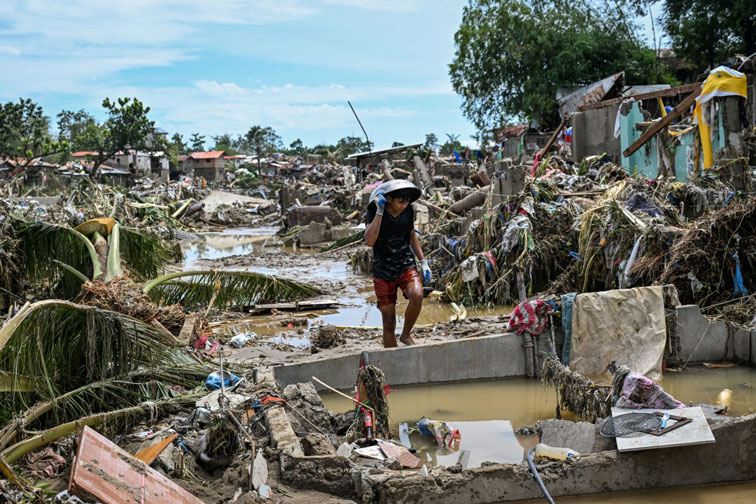On November 6, Philippine authorities said that the death toll from widespread flooding and devastation caused by Typhoon Kalmaegi in the central region of the country increased to at least 114 people, while 127 others were still missing.
The majority of deaths were recorded in province of Philippines, which suffered heavy damage from Typhoon Kalmaegi on November 4, causing flash floods and overflowing rivers and canals, according to Deputy Director of the Civil Defense Agency, Bernardo Rafaelito Alejandro IV.
Six soldiers were among those killed when a Philippine air helicopter crashed in the southern province of Agusan del Sur on November 3.
The Philippine military said the air team was on its way to provide humanitarian relief to provinces severely affected by Typhoon Kalmaegi, but did not specify the cause of the accident.

At least 49 people have drowned in floods, while others have died in landslides and landfall in Cebu, where 13 people are still missing, while 62 others were reported missing in two neighboring provinces, Negros Occidental and Negros Oriental.
Volunteer Caloy Ramirez said that a riverside residential area once considered high-end in concubine City was completely destroyed, many vehicles were swept away and houses collapsed in just a few minutes. "The water rose so quickly that no one had time to react" - he said.
According to the latest storm information from the Philippine Atmospheric, Geophysical and Astronomical Services Administration (PAGASA), typhoon Kalmaegi left the Philippine Forecast Area (PAR) at 0:30 (local time) on November 6. The level 1 wind warning is still in effect in Kalayaan, Palawan Province.
Meanwhile, PAGASA called on people to closely monitor the next typhoon Fung-wong, as it could be the strongest typhoon to hit the Philippines this year.
At 4:00 a.m. on November 6 (local time), the center of Typhoon Fung-wong formed from a tropical depression 1,715 km northeast of Mindanao, with maximum sustained winds of 65 km/h and gusts of 80 km/h, moving northwest at a speed of 20 km/h.
Typhoon Fung-wong is expected to enter PAR on the evening of November 7 or early morning of November 8 with strong typhoon intensity, at which time it will be locally named Uwan.
PAGASA forecasts that the storm will continue to strengthen, reaching super typhoon level and is likely to make landfall at or near the time of reaching its peak intensity in the northern or central Luzon island area on November 10.
According to the typhoon forecast of the Chinese meteorological AI model Fuxi, after making landfall in the Philippines, Typhoon Fung-wong may enter the East Sea on November 10, becoming the 14th typhoon, then moving near the Hong Kong (China) - Hainan Island (China) area on November 11.
However, the path and intensity of the storm are still fluctuating, so people are advised to closely monitor updated news.













